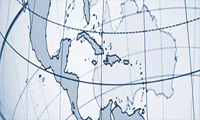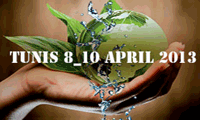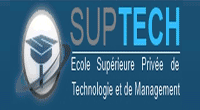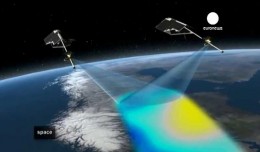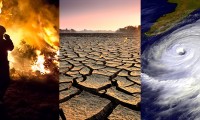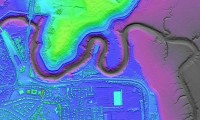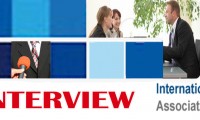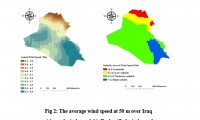The editing committee of GeoSP has interviewed Mr. George Gartner president of ICA and the international academic researcher about the role of ICA in supporting scientific research and young researchers. Mr. Gartner expressed also his impressions after his visit to Tunisia, and his opinion about the organization of the 6th edition of Geotunis during which he participated. The interview includes also Mr. Gartner’s view to the Arab spring and ICA’s readiness to support young researchers from the Arab world.
1- Mr Gartner would you tell us about yourself and about your scientific career?
I was trained as Geographer and Cartographer at University of Vienna and University of Technology Vienna. I am holding a Master degree and a PhD from these Universities. I also was granted a Fulbright – Research Grant to the USA, where I spend half a year at the University of Nebraska at Omaha. I finished my Habilitation to become a Professor in Cartography at Vienna University of Technology. I was a guest professor at several places, including Australia, China and the U.K.
2 – You are the president of the most important association working in the field of cartography, so would you present this association and tell us about the work you do in the field of cartography and the role of new technology in your work?
Cartography is relevant!
Modern Cartography is a key for human mankind. Without maps we would be “spatially blind”. Knowledge about spatial relations and location of objects are most important for enabling economic development, for managing and administering land, for handling disasters and crisis situations or simply to be able to make decision on a personal scale on where and how to go to a particular place.
Cartography is modern!
New and innovative Technologies have an important impact into what Cartographers are doing. Maps can be derived automatically from geodata acquisition methods such as laser scanning, remote sensing or sensor-networks. Smart models of geodata can be build allowing in-depth analysis of structures and patterns. A whole range of presentation forms are available nowadays, from maps on mobile phones all the way to geoinformation presented as Augmented Reality presentations.
Cartography is attractive!
Maps and other cartographic products are attractive. Many people like to use maps, to play around with maps for instance in the Internet or simply want to look at them. We can witness a dramatic increase in the number of users and use of maps currently.
In this situation it is of high importance that those who are interested in maps, mapping and cartography are working together on an international level. This is exactly the role of the International Cartographic Association (ICA).
International Cartographic Association (ICA)
ICA is the world authorative body for cartography and GI Science. It consists of national members and affiliate members. Basically we encourage every nation in the world to join the big family of cartography and GI science, which makes the voice of ICA on the level of United Nations and other global forums even more important. Companies, Universities and other body involved in Cartography and GIScience join ICA as affiliate members, and that numbers are growing as well.
The Association has several instruments. The most important ones are Commissions, where particular topics are discussed and worked through. ICA runs 28 commissions, ranging from Generalisation Aspects to Map Projections (check out the list at http://icaci.org/commissions/). Also ICA is organizing every second year a big International Cartographic Conference. The next one is taking in August 2013 in Dresden, Germany. Make sure, that you don’t miss this event (http://www.icc2013.org/). Also ICA is running outreach and capacity building programmes (a recent workshop was taking place at Tunis in conjunction with the GeoTunis 2012 conference just recently), publications such as a book series or journals. Check out the ICA website at www.icaci.org!
3- Now that the pace of technological developments becomes quicker everyday in each day how do you deal with this pace and what is your role in this development?
From my perspective we have to keep up with technological developments, as they are driving developments currently. However, it is most important that we are not doing research, projects or applications just because they can be done technologically speaking. From my perspective any development in the context of Cartography and GIScience must be rather user-centered then data or technology-driven. This means, that we know about the user’s need first to then be able to use a technology in its best way. Modern Cartography has understood that principle and is including issues like cognitive aspects, use and usability research or design principle in their portfolio.
4 – There are many systems like FIG and UGI what is your role in dealing with the growing number of specialties.
Clearly I think we should not differentiate too much. There are many experts and many expert organizations, but from my perspective bigger organizations have more options, possibilities, offers and power. I am therefore happy to say, that I say clearly
an important role for ICA, as cartography is a growing relevant, modern and attractive domain and that we wish to strengthen the ties to big sister societies, which I see in ISPRS (Photogrammetry and Remote Sensing), FIG and IAG (Geodesy), IGU (Geography) and IHO (Hydrography).
5- What are the methods you use in supporting the young researchers in the field of cartography? Are there internships, scholarships, financing congresses and workshops you offer to young researcher?
ICA is offering the instrument of Travel Awards to participate at the International Cartographic Conferences. This is a competitive instrument, which means you have to submit a poster or paper as well and there is a selection process based on this.
Also ICA is offering the option of having hands-on workshop in African countries. Currently my intention is to change the policy of both instruments in a way, that they become easier accessible. Also I am thinking about evaluating additional instruments, such as PhD grants and summer schools.
6- Are you planning to support researchers in the North African countries after the changes that occurred in this arena thanks to the Arab spring?
It is in the strong interest of ICA to be able to reach out to all cartographers and GI scientist in the world, thus also to North African collegues. It might be best to give those countries a voice within ICA, so that they can influence the future policies and strategies of ICA. I therefore encourage countries like Tunisia, Libya, Egypt and others to become a national member.
7- You have lately visited Tunisia so how do find it after the revolution of January 14th?
I was most surprised by the warm welcome the organizers have provided to me. I found the congress, the collegues and the country most remarkable. I felt safe and comfortable and was impressed by the beauty and the diversity of the country!
8- Mr. Gartner what are your impressions after the participation in the 6th edition of Geo Tunis, how do evaluate it and what are the advices you want to address to the organization team?
I think it was very well organized. It has a strong international audience, a commercial exhibition and an interesting technical programme. I would think to develop this structure further would be just fine. I would recommend to eventually think about slowly lifting the quality of the presentations by including a review process (might be based on the abstracts first). Also it would be nice to have a high-quality publication as an outcome of the conference, such as a special issue of a Journal eventually. It might be good to have the commercial exhibition in a way, that the coffee and lunch breaks are conjuncted.
9 – As you know the geographic information would be an important development tool if it were available for everyone but this is not the case because the geographic information is manipulated by different parties for many excuses, so what is your role in calling for the liberation of the geographic information?
It is very important to have open source GIS and standards (OGC, ISO TC 211) based solutions to achieve widespread application of geotools at grassroots level especially in developing countries. Open source GIS provides accessibility, low cost solutions and lowers the entry barriers for the use of geospatial technologies for all.
ICA has just recently signed a Memorandum of Understanding with OSGeo. This entitles us to foster on the further distribution of the ideas of OpenSource Geospatial Information. Also ICA has set a new commission in place, called ICA Commission on Open Source Geospatial Technologies.
The Open Source Geospatial Technologies Commission aims to promote multi-national holistic research in free and open source geospatial technologies in order to make accessible the latest developments in open source tools to the wider cartographic community. The commission attempts to enhance the usage of free and open source geospatial tools among the cartographic community worldwide, especially for education and research.
The commission will promote the usage of professional and technical standards (ISO TC 211, OGC) for the development of free and open source geospatial software. Commission membership is open to all interested parties and we aim for representation by as many countries. Promotional strategies of the commission include regular e-mails to members, meetings, conferences, workshops, promotion of geospatial standards and publications. To become involved in the commission please contact the chairs or check out http://opensourcegeospatial.icaci.org/.
10- The Tunisian Association of Digital Geographic Information is formed of young researchers is there any support you can offer at the technical and scientific levels?
Get involved in ICA! Join commissions, apply for grants, visit the conferences or simply stay in contact with ICA via LinkedIn, Twitter or www.icaci.org!
11- Since this is the first edition of GeoSP and this is the first interview you address to Tunisian and North African people, what do you say to the readers of this magazine?
From my perspective we are privileged to work in the domain of Cartography and GIScience right now, as there are so many new and innovative challenges, questions and ideas which can be followed currently. What we are doing is relevant and is very much needed from our societies, economies and administrations. What we are doing is attractive and it is modern.
Tunisia and North Africa in general is full of enthusiastic people, which want to contribute to shape a better future. Cartography and GI Science can play a role in this. We should work together on this goal!
 English
English  Français
Français  العربية
العربية 



